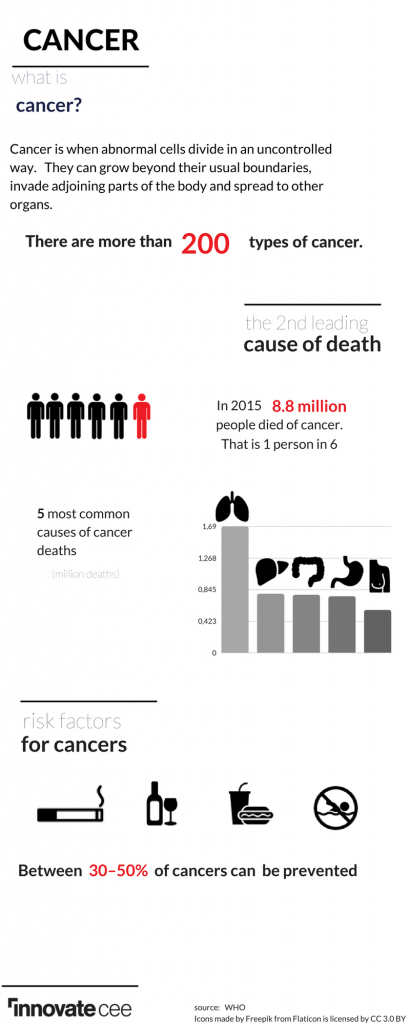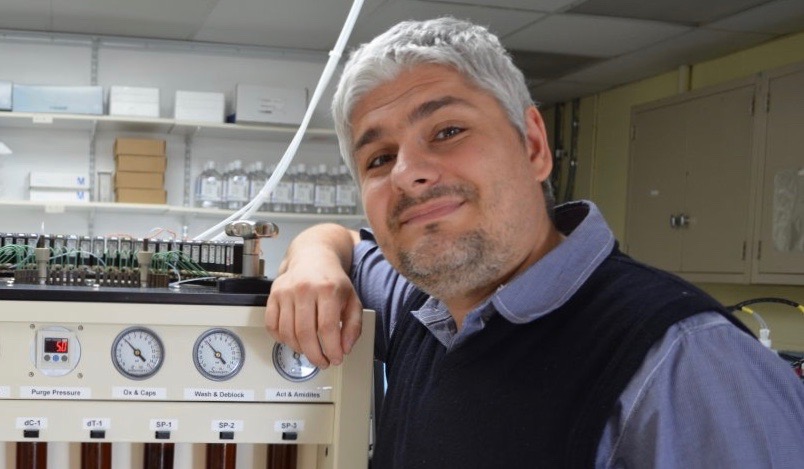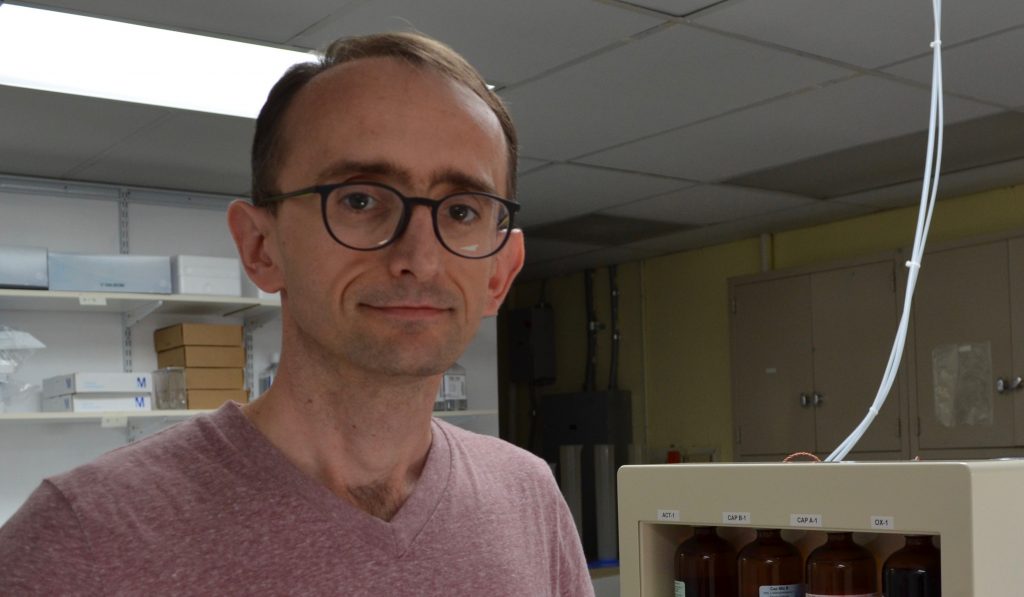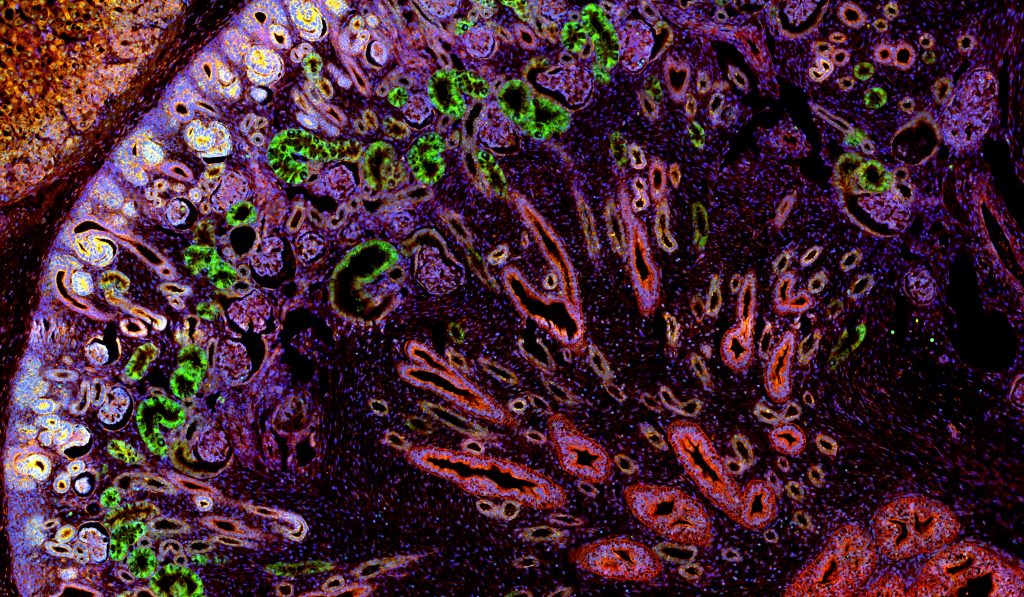Cancer is a tricky and dangerous illness, moreover there are different types of cancer across genders, races and age. However the treatment of that illness is usually very similar- chemotherapy or surgery; some patients survive some die.
A team of Slovak scientists, biochemist Pavol Cekan, molecular biologist Vladimir Wolf and biophysist Peter Kilian, have decided to change this ordinary cancer treatment. In 2016 they set up a start-up called MultiplexDX. Their goal was to develop a reliable, accurate, cost-effective and rapid diagnostic test for cancer.
“We are developing an end product that is a diagnostic test for patients with breast cancer and we also plan to develop a test for prostate cancer.” biochemist Pavol Cekan, cofounder and CEO of MultiplexDX, tells InnovateCEE.
BARCODE FOR EACH CANCER
The test is based on two technologies that are complementary and cross-validating. First one is visualization of RNA (ribonucleic acid) biomarkers of cancer tumour. The second one is sequencing the tumour.
“We extract RNA molecules from tumour and they are being sequenced and quantified. Then we compare both technologies and cross-validate them,” Cekan explains.
If the quantifications from both technologies match scientists can create a specific “barcode” of each cancer. The barcode can suggest to the doctor what kind of personalized treatment and medicines can be used for a specific patient. It can also suggest the length of cancer therapy or combination of medicines.
The greatest advantage of this test is that it can eliminate cancer misdiagnosis, because it is 100% accurate. Moreover some patients could have good diagnosis but they can be overtreated or undertreated.
“We have experimental data to prove that ,however, in reality, the misdiagnosis cannot be eliminated completely” Cekan acknowledges.
“The doctors simply are not able to set the treatment accurately. Our test can help them to do it more precisely and personalized,“ Cekan explains.
So they are essentially focused on supporting clinical decisions. There are probably more than 1,000 anti-cancer drugs. Cekan is not sure that we would need more drugs—but he says that we do need better diagnostics.
FROM RESEARCH TO OWN BUSINESS
Pavol Cekan got the idea of combination two diagnostic technologies during his studies in the USA. After spending years in academic environment Cekan has realized that his future is in commercial sphere, because he wanted to move his ideas into the reality. Instead of making career in a large US biotechnology company, he decided to join forces with two other Slovak scientists and set up a biotech start-up.
“I prefer freedom in my decisions so starting my own business was the best choice. Moreover their project received seed money (300 000 euro) from a Slovak venture capital fund. The company was set up in USA, but now it has a branch in Slovakia.” he explains
“The main hurdles in creating the company was to make ‘a lot of music for small amount of money’. From seed money we had to set up a new laboratory and start to make the first valid products. So we had to create minimalized model that can proof to make money in the future,“ Cekan says.
The first laboratory was built in the USA and the second one is on the way in Slovakia.

REAL PRODUCTS
Now, just two years after establishing MultiplexDX, the company is ready to sell sub products for diagnostic tests. They sell barcoded sequencing adapters that are cheaper, purer and delivered quicker to the customers than those from the competitors. The second product is RNA FISH probes for RNA visualizations in the tissues designed by MultiplexDX proprietary design
“The probe is a nucleic acid that can hybridize to a specific part of cellular RNA and because it contains fluorescent dye you can see it (localization of RNA) under microscope very clearly,” Cekan describes.
It is useful in tissue visualization part of the diagnostic test. The company also owns a bundle of patents from Rockefeller University that enable a special fixation of tissues for the most accurate visualization and quantification of RNA molecules within the cells.
COMPETITORS
The competition in the market with diagnostic tests is vast; not only among start-ups; but also among big biotechnology companies. Especially in visualization process of RNA molecules Slovak start-up has many competitors in the US.
“Their disadvantage is that they cannot get their RNA visualization technologies from cell to tissues. Our advantage is that we can combine both technologies visualisation and sequencing at lower cost,” the scientist claims.
Moreover, the Slovak company can prepare sequencing adapters chemically that is also much cheaper than enzymatically.
PLANS FOR THE FUTURE
Slovak scientists have already made money by selling sequencing adapters. The company can make around 100 000 euro in revenues a year. That amount is not enough for start-up to conduct additional R&D, the pool of customers just for sequencing adapters is limited. The customers are research laboratories and biotechnology companies across the world, but not every customer wants to buy just a part of the technology, the bigger demand is for a whole kit.
“So our goal is to pack our technology including our adapters, buffers, enzymes and protocols into the tool box and sell it. The market for such sequencing kit is much bigger with potential revenues in millions euro,” Cekan claims.
MultiplexDX now has developed almost all parts of this potential kit box. Only validation of proprietary chemical modifications have to be developed in the upcoming year. However they face more troubles, to validate diagnostic tests, they need to cooperate with biobanks with archived tissues from cancer patients. But there are some limitations Slovak biobanks have; so they have to cooperate with Austrian and Czech biobanks. Moreover Central Europe is very homogenous region in term of race, so the validation of cancer diagnosis in the central Europe might not be sufficient for the US with a more mixed population.
“So we have to get access to more biobanks in the US as well,” Cekan concludes.












